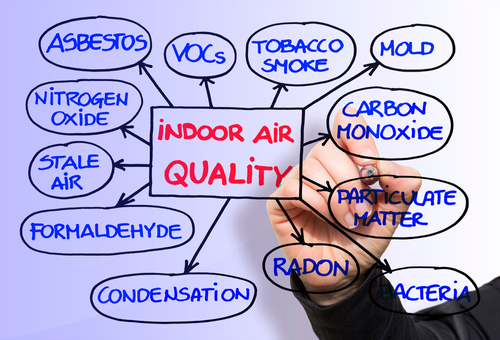
Maintaining good air quality in commercial properties is essential for the health and well-being of employees, customers, and visitors. Poor air quality can lead to a range of health issues, including respiratory problems, allergies, and fatigue. Recognizing the signs of poor air quality in your commercial property is crucial for taking action to improve indoor air quality and create a healthier environment for everyone. In this blog post, we will explore the signs of poor air quality in commercial properties and discuss how to address these issues effectively.
Understanding the Importance of Commercial Air Quality
Commercial properties, such as office buildings, retail establishments, and healthcare facilities, can be prone to poor air quality due to factors such as inadequate ventilation, the presence of pollutants, and improper maintenance of HVAC systems. Poor air quality can have a significant impact on the health and productivity of occupants, leading to increased absenteeism, decreased morale, and reduced performance. By monitoring and addressing air quality issues in commercial properties, building owners and facility managers can create a safer and more comfortable indoor environment for all occupants.
Signs of Poor Air Quality in Commercial Properties
There are several common signs that indicate poor air quality in commercial properties. These include:
1. Unpleasant Odors: Foul or musty odors in the air can be a sign of mold growth, stagnant water, or the presence of chemicals or pollutants. These odors can be unpleasant and may cause discomfort or irritation to building occupants.
2. Dust and Debris: Excessive dust and debris in the air or on surfaces can indicate poor air quality in a commercial property. Dust buildup can exacerbate respiratory issues and allergies and may be a sign of inadequate filtration or ventilation in the HVAC system.
3. Mold Growth: Visible mold growth on walls, ceilings, or other surfaces is a clear indication of poor air quality in a commercial property. Mold spores can trigger allergies and respiratory problems and should be addressed promptly to prevent further health issues.
4. High Humidity Levels: Excessively high humidity levels in a commercial property can create a breeding ground for mold, mildew, and bacteria. High humidity can also make the indoor environment feel uncomfortable and muggy, leading to decreased productivity and occupant satisfaction.
5. Respiratory Symptoms: The presence of respiratory symptoms, such as coughing, sneezing, wheezing, or shortness of breath, among building occupants may indicate poor air quality in a commercial property. These symptoms can be exacerbated by exposure to pollutants, allergens, or other contaminants in the air.
Addressing Poor Air Quality in Commercial Properties
To improve air quality in commercial properties and create a healthier indoor environment for occupants, building owners and facility managers can take the following steps:
1. Conduct Indoor Air Quality Testing: Schedule regular indoor air quality testing to assess the levels of pollutants, allergens, and other contaminants in the air. Testing can help identify specific air quality issues and inform targeted remediation efforts.
2. Improve Ventilation: Ensure that ventilation systems are properly maintained and functioning efficiently to provide a continuous supply of fresh air to building occupants. Consider installing air purifiers or ventilation upgrades to enhance indoor air quality.
3. Address Mold and Moisture Issues: Promptly address any water leaks, moisture intrusion, or mold growth in the commercial property. Remove mold and mildew from surfaces, fix water leaks, and implement moisture control measures to prevent future issues.
4. Clean and Maintain HVAC Systems: Regularly clean and maintain HVAC systems to prevent the buildup of dust, dirt, and debris that can affect indoor air quality. Change filters regularly, schedule professional HVAC inspections, and address any system malfunctions promptly.
5. Implement Green Cleaning Practices: Use eco-friendly cleaning products and practices to reduce the use of harmful chemicals and pollutants in the indoor environment. Green cleaning practices can improve indoor air quality and create a healthier workspace for occupants.
Summary
By recognizing the signs of poor air quality in commercial properties and taking proactive steps to address these issues, building owners and facility managers can create a healthier indoor environment for employees, customers, and visitors. Prioritizing commercial air quality can lead to improved occupant health, increased productivity, and enhanced overall satisfaction with the indoor environment.
Need a Commercial HVAC Contractor in St. Louis Park, MN?
Locally owned and operated since 1991, Air Climate Control Inc specializes in commercial service and repair of air conditioning, heating, and refrigeration, serving Minneapolis and the surrounding areas with quality, prompt, and reliable work. Air Climate Control Inc strives to provide same-day service to ensure client comfort and satisfaction. We specialize in preventative maintenance plans as well as repair and can sub-contract for installation service. Our estimates are always FREE of charge. Call us TODAY for all of your commercial refrigeration, air conditioning, and heating needs!
